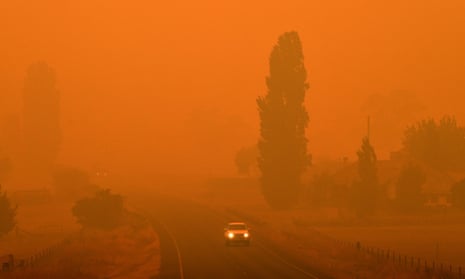Australia is a fire continent. Imagine California on the scale of the 48 contiguous states, but drier, more routinely kindled and with winds that can transform large swathes of land into a veritable fire flume. From time to time, its simmering flames boil over into seeming tsunamis of fire.
And Australia has a culture to match. It has institutions to study, fight and light fire. It has a literature of fire, a folklore of fire and a fire art that is continuous from Indigenous bark paintings to modernist musings. It has special bushfire collections at its museums. It has a fire politics: on three occasions conflagrations have sparked royal commissions, and from 2009 to 2017, 51 official inquiries.
The worst fires have acquired names and become historical milestones, such as Red Tuesday (1898), Ash Wednesday (1983), Black Christmas (2001), Black Saturday (2009).
Now they are joined by the as-yet unnamed megafires of 2019-20. Call them the Forever fires, for they seem inextinguishable, burning with implacable insistence and smoke palls that extend their reach far beyond the flames’ grasp.
Yes, Australia and bushfire are old acquaintances. But the past 20 years feel different. The bad fires are more frequent, more eruptive and more damaging. The Black Saturday fires, which killed 173 people, struck with the cultural force of a terrorist attack, and seemed to call into question the very premises of a “first world” society on a land capable of such fury. The Forever bushfires deepen that query.
But there are two other fires that provide a wider panorama. One is overt – the fires that burn living landscapes, the bush. The other fire is covert, because it burns lithic landscapes. These are the once living, now fossilized biomasses such as coal and gas that we combust to power our industrial economies.
Those two fire realms are interacting in ways that are proving ever more entwined and threatening. That so many fires in Australia (and California) start from power lines is an apt metaphor for the way the two realms of fire interact. The secondary effects are not restricted to global warming or ocean acidification. They affect how people organize landscapes – their agriculture, nature reserves, transportation grids – all aspects of geography that, in turn, influence the character of bushfires.
We have been burning our combustion candle at both ends. Now, it’s payback time, and the two types of fire are colluding.
Australia’s predisposition to fire makes it an early flash point for what I like to call the Pyrocene. But many of the same phenomena are appearing in America – unstoppable fires, fire deaths and fire refugees, smoked-in and incinerated cities, damaged watersheds and post-burn floods, economic crunches from lost tourism, bankrupt utilities, snake-bit insurance companies. Wildfires moving from exurban fringes to city cores. Extended states of emergency. Prolonged and painful cleanups. Political anger.
The areas of the US with a history of fire will suffer the worst burns, but the combustion miasma will seep into other, seemingly immune, parts of the country. Paradoxically, places like California long frequented by fire are better prepared to cope with the coming crises. Places unaccustomed to fires lack the institutions and infrastructure, and they will struggle.
Even if fossil fuels somehow cease overnight, greenhouse gases will still take a long time to work their way out of the atmosphere, so the climatic effects will linger. This puts the immediate focus on coping with landscape fires. There is plenty to do – harden communities, get more good fire into the countryside, design to accept that landscape fire is not a freak apparition from the fringe but an informing fact of modern life. Wild, feral or prescribed, there is much more fire to come.
We have created the fire equivalent of an ice age. The latest round of Australian fires will stop at the country’s shores. The Pyrocene, however, will affect all of us, and persist long into the future.
Steve Pyne is an emeritus professor at Arizona State University, and the author of Burning Bush: A Fire History of Australia and most recently the second edition of Fire: A Brief History
